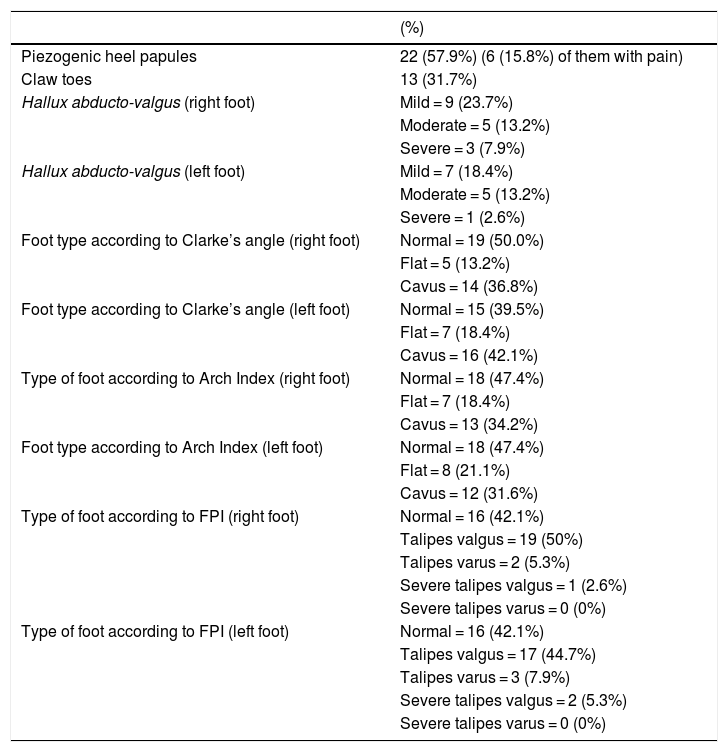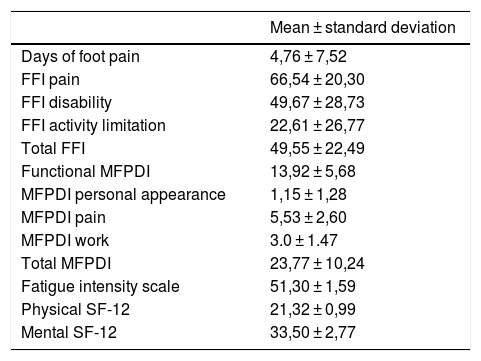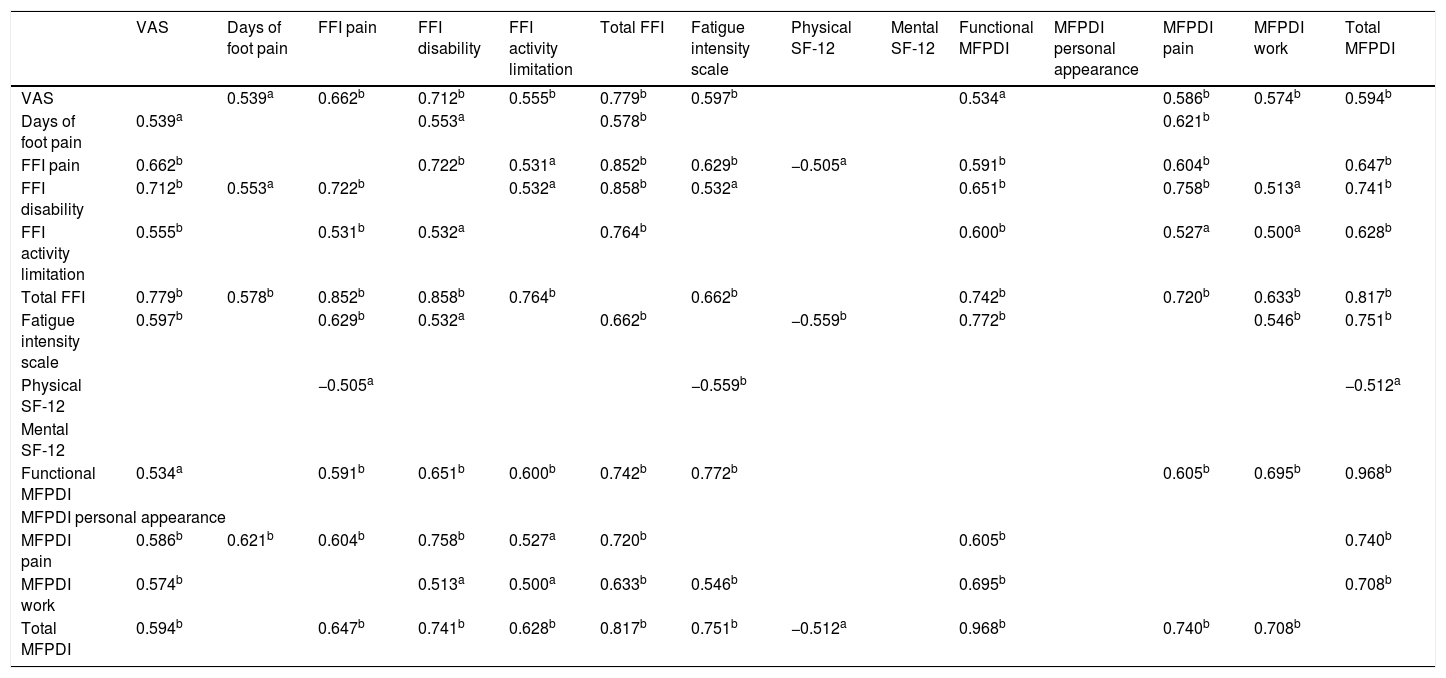This paper aims to describe the type of foot and most frequent podiatric alterations, as well as the level of pain, disability, fatigue and alteration of quality of life in patients with Ehlers-Danlos syndrome (EDS).
Materials and methodsThirty-eight individuals with hypermobile or classic EDS participated. The percentage of pain in the foot and deformities was recorded, and several questionnaires were administered. The type of foot was classified according to the footprint and the Foot Posture Index.
ResultsThere was a high degree of pain, disability, intensity of fatigue and low quality of life in these patients. According to the footprint, 20% presented flat feet, 47% normal feet and 33% cavus feet.
ConclusionsThe participants in this study had a high percentage of foot problems related to high levels of pain and limited functionality in the feet. The quality of life of these patients appeared diminished. Foot types were observed according to the footprint and deformities similar to those of the general population.
En este trabajo se pretende describir el tipo de pie y las alteraciones podológicas más frecuentes, el nivel de dolor, la discapacidad, la fatiga y la alteración de la calidad de vida que presentan los pacientes con síndrome de Ehlers-Danlos (SED).
Materiales y métodosTreinta y ocho individuos con SED tipo hipermóvil o clásico fueron reclutados. Se registró el porcentaje de dolor en el pie y las deformidades, y se les aplicaron distintos cuestionarios. El tipo de pie se clasificó según la huella y el Foot Posture Index.
ResultadosSe registra un alto grado de dolor, discapacidad, intensidad de la fatiga y bajo nivel de calidad de vida en estos pacientes. Según la huella el 20% presentó pies planos, el 47% pies normales y el 33% pies cavos.
ConclusionesLos participantes en este estudio presentaron un alto porcentaje de problemas podológicos, altos niveles de dolor y limitación de la funcionalidad en los pies. La calidad de vida de estos pacientes aparece disminuida. Se han observado tipos de pies según la huella y de deformidades similares a la población general.









